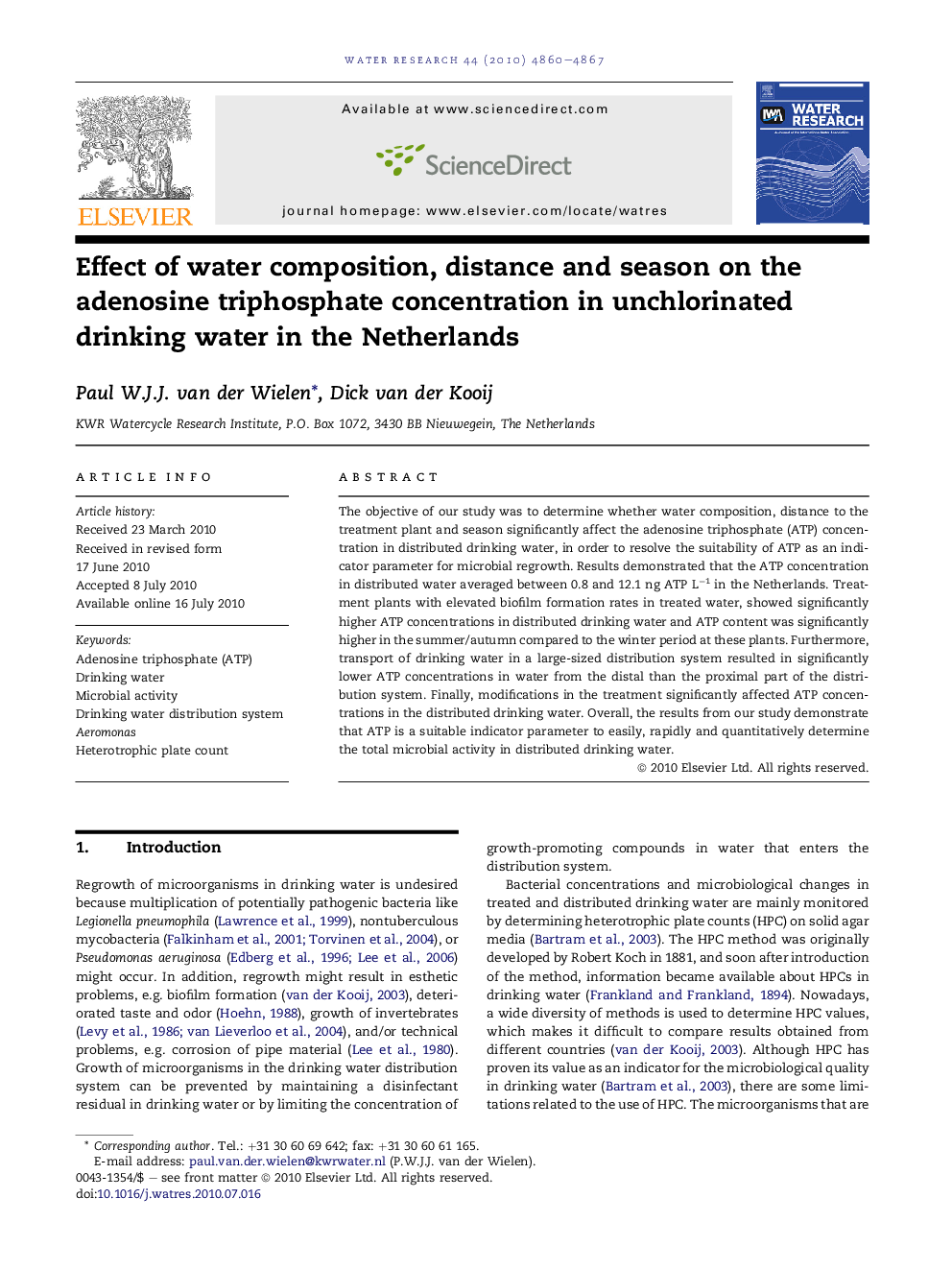| Article ID | Journal | Published Year | Pages | File Type |
|---|---|---|---|---|
| 4483540 | Water Research | 2010 | 8 Pages |
The objective of our study was to determine whether water composition, distance to the treatment plant and season significantly affect the adenosine triphosphate (ATP) concentration in distributed drinking water, in order to resolve the suitability of ATP as an indicator parameter for microbial regrowth. Results demonstrated that the ATP concentration in distributed water averaged between 0.8 and 12.1 ng ATP L−1 in the Netherlands. Treatment plants with elevated biofilm formation rates in treated water, showed significantly higher ATP concentrations in distributed drinking water and ATP content was significantly higher in the summer/autumn compared to the winter period at these plants. Furthermore, transport of drinking water in a large-sized distribution system resulted in significantly lower ATP concentrations in water from the distal than the proximal part of the distribution system. Finally, modifications in the treatment significantly affected ATP concentrations in the distributed drinking water. Overall, the results from our study demonstrate that ATP is a suitable indicator parameter to easily, rapidly and quantitatively determine the total microbial activity in distributed drinking water.
